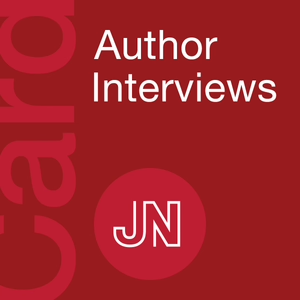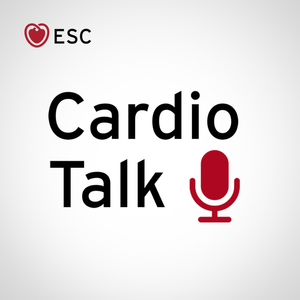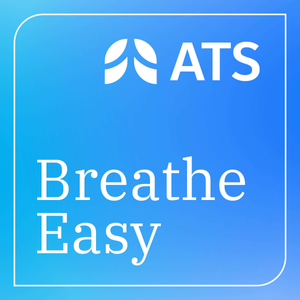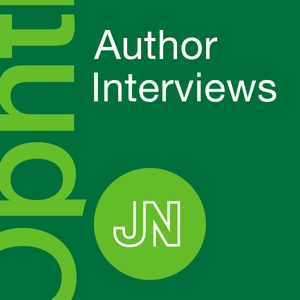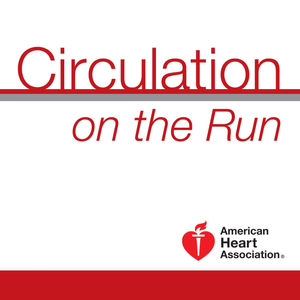
Circulation August 2, 2016, Issue
08/01/16 • 18 min
Carolyn: Welcome to Circulation on the Run, your weekly podcast summary and backstage pass to the journal and its editors. I'm doctor Carolyn Lam, associate editor from the National Heart Center and Duke National University of Singapore. Joining on me in just a moment are two guests to discuss a very exciting new category of papers, known as the white paper. The topic for today is an evolution within the field of current day percutaneous coronary intervention that of the treatment of higher risk patients with an indication for revascularization. But first, here is your summary of this week's journal.
The first study is from first author doctor Jolis and corresponding author doctor Grainger, from the duke clinical research institute in Durham, North Carolina. These authors describe the American Heart Association Mission: Lifeline, STEMI Systems Accelerator. This exciting project represents the largest effort ever attempted in the United States to organize ST segment elevation myocardial infarction care across multiple regions, including 484 hospitals, 1,253 emergency medical services across sixteen regions and involving more than 23,800 patients.
Indeed, this project aims to organize coordinated regional reperfusion plans so as to increase the proportion of patients treated within guideline goals, that is a first medical contact to devise time of less than 90 minutes for STEMI patients directly presenting to PCI capable hospitals and less than 120 minutes for transferred patients.
The authors observed that during the study period of July 2012 to December 2013, there was a significant increase in the proportion of patients meeting these guideline goals, including an increase from 50% to 55% of STEMI patients directly presenting via emergency services and from 44% to 48% of those transfer patients. The authors concluded that these improvements, while modest, suggest the potential for reductions in total ischemic time and happily observe corresponding trends towards lower in-hospital mortality compared with the national data towards the end of the measurement period. Indeed, the tickle message is that the findings support continued efforts to implement regional STEMI networks.
The next study is by first author doctor Hidari and corresponding author doctor Kuang from the Brigham and Women's Hospital in Boston, Massachusetts. They describe the OMEGA-REMODEL randomized clinical trial. This is a multi-center, double-blinded, placebo control trial of 358 participants presenting within acute myocardial infarction who are randomized to six months of high dose omega-3 fatty acids at four grams daily versus placebo.
Cardiac magnetic resonance imaging was used to assess cardiac structure and tissue characteristics at baseline and following therapy with the primary study in point being a change in left ventricular systolic volume index. Indeed, the authors reported that compared to placebo, patients who received four grams daily omega-3 fatty acids experienced significant improvements in both left ventricular and systolic volume and surrogate measures of non-infarct myocardial fibrosis during the six months of treatment.
These remodeling benefits further followed a dose response relationship with the rise in the in vivo omega-3 fatty acid levels as quantified by your red blood cell index. They concluded that four grams daily of omega-3 fatty acid is a safe and effective treatment in improving cardiac remodeling in patients receiving current guideline based post-myocardial infarction therapies. Indeed, this does warrant perspective clinical studies.
The third study is by first author doctor Liu and corresponding author doctor Sia from University of Texas, Houston Medical School and Colleagues, who sought to understand the molecular basis underlying adaption to high altitude hypoxia. By conducting both human high altitude and most genetic studies, the authors identified a novel functional role of CD73-dependent elevations in extracellular adenosin signolin in response to high altitude hypoxia.
This led to sequential activation of a readthrough site AMP-activated protein kinase, which in turn resulted in increased 2,3-bisphosphoglyceric production and enhanced oxygen release capacity to peripheral tissues. Thus, reducing tissue hypoxia, inflammation and pulmonary injury. These findings have significantly added to our understanding of the molecular mechanisms underlying adaption to hypoxia. Thereby, opened novel therapeutic possibilities for the prevention and treatment of hypoxia related conditions.
The final study is from first author doctor Yen and corresponding author doctor Chen from the National Taiwan University and Colleagues, who aimed to determine the effect of betel nut chewing and paternal smoking on the risks of early metabolic syndrome in human offspring. The author studied more than 13,000 parent-child trios identified from more tha...
Carolyn: Welcome to Circulation on the Run, your weekly podcast summary and backstage pass to the journal and its editors. I'm doctor Carolyn Lam, associate editor from the National Heart Center and Duke National University of Singapore. Joining on me in just a moment are two guests to discuss a very exciting new category of papers, known as the white paper. The topic for today is an evolution within the field of current day percutaneous coronary intervention that of the treatment of higher risk patients with an indication for revascularization. But first, here is your summary of this week's journal.
The first study is from first author doctor Jolis and corresponding author doctor Grainger, from the duke clinical research institute in Durham, North Carolina. These authors describe the American Heart Association Mission: Lifeline, STEMI Systems Accelerator. This exciting project represents the largest effort ever attempted in the United States to organize ST segment elevation myocardial infarction care across multiple regions, including 484 hospitals, 1,253 emergency medical services across sixteen regions and involving more than 23,800 patients.
Indeed, this project aims to organize coordinated regional reperfusion plans so as to increase the proportion of patients treated within guideline goals, that is a first medical contact to devise time of less than 90 minutes for STEMI patients directly presenting to PCI capable hospitals and less than 120 minutes for transferred patients.
The authors observed that during the study period of July 2012 to December 2013, there was a significant increase in the proportion of patients meeting these guideline goals, including an increase from 50% to 55% of STEMI patients directly presenting via emergency services and from 44% to 48% of those transfer patients. The authors concluded that these improvements, while modest, suggest the potential for reductions in total ischemic time and happily observe corresponding trends towards lower in-hospital mortality compared with the national data towards the end of the measurement period. Indeed, the tickle message is that the findings support continued efforts to implement regional STEMI networks.
The next study is by first author doctor Hidari and corresponding author doctor Kuang from the Brigham and Women's Hospital in Boston, Massachusetts. They describe the OMEGA-REMODEL randomized clinical trial. This is a multi-center, double-blinded, placebo control trial of 358 participants presenting within acute myocardial infarction who are randomized to six months of high dose omega-3 fatty acids at four grams daily versus placebo.
Cardiac magnetic resonance imaging was used to assess cardiac structure and tissue characteristics at baseline and following therapy with the primary study in point being a change in left ventricular systolic volume index. Indeed, the authors reported that compared to placebo, patients who received four grams daily omega-3 fatty acids experienced significant improvements in both left ventricular and systolic volume and surrogate measures of non-infarct myocardial fibrosis during the six months of treatment.
These remodeling benefits further followed a dose response relationship with the rise in the in vivo omega-3 fatty acid levels as quantified by your red blood cell index. They concluded that four grams daily of omega-3 fatty acid is a safe and effective treatment in improving cardiac remodeling in patients receiving current guideline based post-myocardial infarction therapies. Indeed, this does warrant perspective clinical studies.
The third study is by first author doctor Liu and corresponding author doctor Sia from University of Texas, Houston Medical School and Colleagues, who sought to understand the molecular basis underlying adaption to high altitude hypoxia. By conducting both human high altitude and most genetic studies, the authors identified a novel functional role of CD73-dependent elevations in extracellular adenosin signolin in response to high altitude hypoxia.
This led to sequential activation of a readthrough site AMP-activated protein kinase, which in turn resulted in increased 2,3-bisphosphoglyceric production and enhanced oxygen release capacity to peripheral tissues. Thus, reducing tissue hypoxia, inflammation and pulmonary injury. These findings have significantly added to our understanding of the molecular mechanisms underlying adaption to hypoxia. Thereby, opened novel therapeutic possibilities for the prevention and treatment of hypoxia related conditions.
The final study is from first author doctor Yen and corresponding author doctor Chen from the National Taiwan University and Colleagues, who aimed to determine the effect of betel nut chewing and paternal smoking on the risks of early metabolic syndrome in human offspring. The author studied more than 13,000 parent-child trios identified from more tha...
Previous Episode
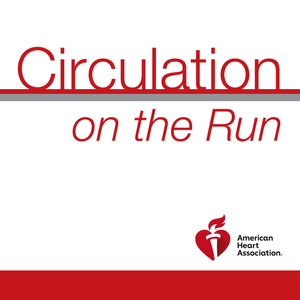
Circulation July 26, 2016, Issue
Carolyn: Welcome to Circulation on the Run, your weekly podcast summary and backstage pass to the journal and its editors. I'm Dr. Carolyn Lam, Associate Editor from the National Heart Centre and Duke National University of Singapore. I am so excited to be joined in just a moment by Dr. Andrea [inaudible 00:00:21] and Dr. Wendy Post to discuss the feature paper this week about leisure-time physical activity and the risk of coronary heart disease in young women. First, here's the summary of this week's issue.
The first paper, by Dr. Bohula and colleagues at the TIMI Study Group at Brigham and Women's Hospital in Boston, Massachusetts, aim to test the hypothesis that an atherothrombotic risk stratification tool may be useful to identify high-risk patients who have the greatest potential for benefit from more intensive secondary preventive therapy such as treatment with Vorapaxar following a myocardial infarction. As a reminder, Vorapaxar is a first-in-class anti-platelet agent that inhibits thrombin-mediated activation of platelets via the protease activator receptor 1. The authors studied almost 8,600 stable patients with a prior myocardial infarction followed for a median of two and a half years.
In the thrombin receptor antagonist and secondary prevention of athrothrombotic ischemic events, TIMI 50 trial. They identified nine independent risk predictors which were age, diabetes, hypertension, smoking, peripheral artery disease, prior stroke, prior coronary bypass grafting, heart failure and renal dysfunction. A simple integer-based scheme using these predictors showed a strong graded relationship with the rates of cardiovascular death, myocardial infarction or ischemic stroke. Moreover, the net clinical outcome was increasingly favorable with Vorapaxar across the risk groups.
In summary, this paper provides a practical strategy that could be used by clinicians to assist with risk stratification and therapeutic decision-making regarding Veropaxar use for secondary prevention after myocardial infarction.
The next paper is by first author Dr. [inaudible 00:02:40] and corresponding authors, Dr. [Gerstein 00:02:43] from the Beth Israel Deaconess Medical Center and Dr. [Carr 00:02:47] from the Broad Institute of Harvard and MIT, who look at aptamer-based proteomic profiling. Now DNA aptamers are [alu 00:02:57] nucleotides of approximately 50 base pairs in length selected for their ability to bind proteins with high specificity and affinity. They therefore holds considerable promise for biomarker and pathway discovery in cardiovascular diseases.
These authors applied a novel technology that uses single-stranded DNA aptamers to measure over 1,100 proteins in a single blood sample. They applied this to a model of planned myocardial injury and that is patients undergoing septal ablation for hypertrophic cardiomyopathy, and they found that 217 proteins were significantly changed in the peripheral vein blood after planned myocardial injury in this derivation cohort. They validated 79 of these proteins in an independent cohort. Furthermore, among 40 validated proteins that increase within one hour after myocardial injury, 23 were also elevated in patients with spontaneous myocardial infarction.
Finally, the authors applied this to archive samples from the Framingham heart study and showed 156 significant protein associations with the Framingham risk score. This study is so exciting because it highlights any merging proteomics tool that captures a large number of low abundance analytes with high sensitivity and precision, thus providing important proof of principle for future clinical applications and this is discussed in an excellent editorial that accompanies this paper by doctors Graham [Malini 00:04:37], [Lau Enleui 00:04:39] from the University of Ottawa Heart Institute.
The next paper is by Dr. [Anter 00:04:51] and colleagues from the Beth Israel Deaconess Medical Center in Boston, Massachusetts, who looked at post infarction, reentrant ventricular tachycardia and addressed the problem that in vivo descriptions of ventricular tachycardia circuits are currently limited by insufficient spatiotemporal resolution. The authors therefore utilize a novel, high resolution mapping technology to characterize the electrophysiological properties of these reentrant circuits in 15 swine.
The main finding was that the zones of slow conduction within the reentrant circuits with the inward and outward curvatures while conduction velocity in the comment channel isthmus itself was nearly normal. The authors further demonstrated that entrainment mapping over estimated the true size of the isthmus. Thus, the conclusion was that high resolution activation mapping of ventricular tachycardia may better guide ablation therapy and ablation at zones of high curvature may be an attractive target for ablation.
The final papers from first author, Dr. [Tang 00:06:08...
Next Episode
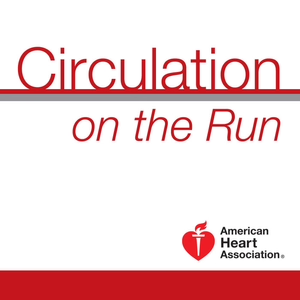
Circulation August 9, 2016, Issue
Carolyn: Welcome to Circulation on the Run, your weekly podcast summary and backstage pass to the journal and its editors. I'm Dr. Carolyn Lam, associate editor from National Heart Center and Duke National University in Singapore. Joining me today will be Dr. Katherine Mills and Dr. Andrew Moran to discuss the very striking findings of a new study on global disparities of hypertension prevalence and control, but first, here's the summary of this week's original papers.
In a study by first author, Dr. [Lu 00:00:42], corresponding author, Dr. Denny, from the Harvard TH Chan School of Public Health in Boston, Massachusetts and colleagues, authors aimed to investigate how the risk of cardiovascular disease is distributed among whites and blacks in the United States and how interventions on cardiovascular risk factors would reduce these racial disparities. To achieve these aims, the authors used a nationally representative sample of more than 6,000 adults, age 50-69 years of age, in the United States and developed a risk prediction model that was calibrated separately for blacks and whites.
The main results were that were substantial disparities in the risk of fatal cardiovascular disease; 25% of black men and 12% of black women were at high risk of fatal cardiovascular disease compared to only 10% of white men and 3% of white women, respectively. A large proportion of these fatal cardiovascular events among blacks were concentrated among this small proportion of the population. Now, whereas, population wide and interventions focused on single risk factors did not reduce black/white disparities in fatal cardiovascular risk and intervention that focused on high-risk individuals and reduced multiple risk factors simultaneously could indeed reduce black/white disparities in fatal cardiovascular disease by a quarter in men and a third in women.
These results really emphasize that focusing preventative interventions on the high-risk individuals has a large potential to improve overall cardiovascular health and reduce racial disparities in the United States.
The next paper is from first author, Dr. Lee, corresponding author, Dr. Federer, from Ohio State University Wexner Medical Center in Columbus Ohio and colleagues who looked at the issue of adenosine-induced atrial fibrillation and aimed to elucidate the molecular and functional mechanisms that may underlie this problem. To achieve this aim they integrated panoramic optical mapping and regional immunoblotting to allow them to resolve the protein expression of the two main components of the adenosine signaling pathway, mainly the A1R and GIRK4. They found that these signaling pathways were 2-3 times higher in the human right atrium compared to the left atrium leading to a greater right atrial action potential duration shortening in response to adenosine.
Furthermore, they showed that sustained adenosine-induced atrial fibrillation is maintained by re-entrant drivers localized in the lateral right atrial regions with the highest A1R and GIRK4 expression. Finally, the authors demonstrated that selective GIRK channel blockade successfully terminated and prevented atrial fibrillation. Thus, suggesting that the arrhythmogenic effect of adenosine in human atria may be mediated by activating GIRK channels. The take-home message, therefore, is that specific blockade of the GIRK channels may offer a novel mechanism to prevent adenosine mediated atrial fibrillation in patients.
The next study is from Dr. Nielsen and colleagues from the Copenhagen University Hospital of Bispebjerg in Copenhagen, Denmark, who aimed to assess the optimal blood pressure in patients with asymptomatic aortic valve stenosis. To achieve this aim, the authors used data from the simvastatin, ezetimibe in aortic stenosis or SEAS trial of 1,767 patients with asymptomatic aortic stenosis and no manifest atherosclerotic disease. Outcomes that were studied included all-cause mortality, cardiovascular death, heart failure, stroke, myocardial infarction, and aortic valve replacement. The main findings were that an average diastolic blood pressure above 90 and a systolic blood pressure above 160 millimeters mercury were associated with a poor outcome.
Furthermore, low systolic blood pressure was also related to adverse outcomes while low average diastolic blood pressure was harmful in moderate aortic stenosis. In summary, the optimal blood pressure, which was associated with the lowest risk of adverse outcomes, were the systolic blood pressure between 130 and 139 and a diastolic blood pressure between 70 and 90 millimeters mercury. The clinical take-home message is that in the scarcity of randomized controlled evidence, these results may assist clinicians in their decisions in blood pressure measurements in patients with aortic stenosis, meaning that a blood pressure above 149D may be treated while a blood pressure lower than 120 systolic or 60 di...
If you like this episode you’ll love
Episode Comments
Generate a badge
Get a badge for your website that links back to this episode
<a href="https://goodpods.com/podcasts/circulation-on-the-run-255644/circulation-august-2-2016-issue-29730702"> <img src="https://storage.googleapis.com/goodpods-images-bucket/badges/generic-badge-1.svg" alt="listen to circulation august 2, 2016, issue on goodpods" style="width: 225px" /> </a>
Copy

